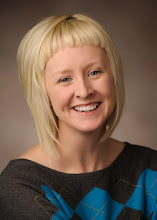One of the coolest things that I have learned since I began teaching workshops on bilingual storytime is how many varied approaches there are out there to such programming. For example, with the exception of music which I only use if it is bilingual or in Spanish, I tend to present most of the materials in my programs in both English and Spanish. At my presentation at ALA this summer, there were a couple of librarians from the Southwest who attract a mostly bilingual crowd to their programs (their participants speak both English and Spanish comfortably). These librarians do not present the same materials in both English and Spanish, but rather present one item in English and then move to Spanish and so on. In my online classes, I often work with librarians who themselves do not speak Spanish who are wanting to learn how they can incorporate a few Spanish words or songs here and there into their English programs. Though learning about these different approaches doesn't necessarily change my particular style of how I design and present bilingual storytime, it has helped me to think more broadly about what it can look like. I hope that some of these ideas will be useful across a broad spectrum of storytimes.
Bilingual Storytime: Seasons / Las estaciones
Opening Song
There are many potential opening songs for bilingual storytime. One recommendation is "What's Your Name / ¿Cómo te llamas?"
Talk Time with Flannelboard
Take a few minutes to introduce each season in English and Spanish: winter / el invierno, spring / la primavera, summer / el verano, and fall / el otoño. There is plenty of inspiration to be found for flannelboard designs on the Flannel Friday Seasons Pinterest board. I like to keep it simple with a snowflake / un copo de nieve, a flower / una flor, a sun / un sol, and a leaf / una hoja. You can talk about the various seasons in all kinds of ways depending on the age of your group (what you wear, what the weather is like, which is your favorite, etc.). This is a great moment to make a brief early literacy statement for the parents, encouraging them to talk with their children frequently in the language that the know best to help their children learn new words.
Movement Rhyme
This is a little movement ryhme that I came up with recently. You could share in English and Spanish all at once on your own or with a partner, share once in Spanish and then again later in the program in English, or even switch from English to Spanish from verse to verse depending on your style and your group.
En el invierno
hace frio, frio, frio.
(Tirite el cuerpo como tenga frio.)
In the winter time
it is cold, cold, cold.
(Shiver your body like you are cold.)
En la primavera
hace lluvia, lluvia, lluvia.
(Menee los dedos por abajo como la lluvia.)
En la primavera
hace lluvia, lluvia, lluvia.
(Menee los dedos por abajo como la lluvia.)
In the spring time
it rains, rains, rains.
(Wiggle your fingers down like rain.)
En el verano
hace sol, sol, sol.
(Levante los brazos por arriba como el sol.)
En el verano
hace sol, sol, sol.
(Levante los brazos por arriba como el sol.)
In the summer time
the sun shines, shines, shines.
(Raise your arms up overhead like the sun.)
En el otoño
caen hojas, hojas, hojas.
(Gire como una hoja cayendo.)
En el otoño
caen hojas, hojas, hojas.
(Gire como una hoja cayendo.)
In the fall time
the leaves fall, fall, fall.
(Spin around like leaves falling and come to seated on the floor.)
Book 1
 |
| Llegó la primavera / Spring is Here by Taro Gomi |
Movement Song
There are many options for movement songs. I love to use them to transition between the sitting activities, especially with mixed-age groups. Movement songs just need to be fun; no theme is necessary. If you want to stick with the celebration of the seasons, a traditional song like "De Colores" could be made into a movement activity by adding egg shakers, color scarves or a parachute. If you want to try something just for fun, I like this movement song from Grupo Encanto called "La ronda de los conejos." This song is a fun what to get parents engaged with the program as well.
Find the lyrics here on the Cantajuegos blog.
Book 2
 |
| Un recorrido por las estaciones por Stella Blackstone |
Nonfiction Book
The seasons are a great theme for exploring nonfiction with kids. You don't have to read the book word-for-word or all the way through; another option is to use the book and some of its content (including the pictures) to talk about the seasons and why they change. This echoes back to the early literacy statement you earlier shared with parents about the importance of talking frequently with children and models how to use a book to inspire such conversation. Some options are the series of seasons books available in Spanish by Sian Smith or Las estaciones y el tiempo / Seasons and Weather by Mary Berendes.
Closing Song
Lyrics available here on the King County Tell Me a Story wiki.
Final Activity
I absolutely love this leaf collage idea from the El Hada de Papel blog. If you are fortunate enough to be in an area where there are trees, you could spend a few minutes outside together collecting leaves as a group for your collages. If not, ask your staff to bring in some from home.
There you have it! I would love to get your feedback if you try any of these ideas in your own storytime. Or if there is a book, song or another idea that you'd like to add, please share in the comments below. Thanks for reading!




No comments:
Post a Comment